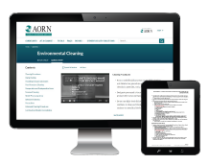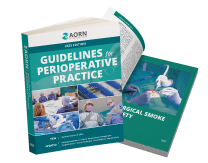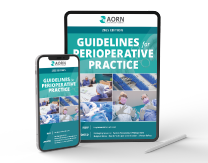Guidelines for Perioperative Practice
- Home
- Guidelines & Resources
- Guidelines for Perioperative Practice
Safe Surgery Together
AORN's Guidelines for Perioperative Practice are the gold-standard in evidence-based recommendations to deliver safe perioperative patient care and achieve workplace safety.
Online Access to the Guidelines for Your Entire Facility
eGuidelines Plus is an online facility subscription providing access to the most
current AORN Guidelines for Perioperative Practice complete with tools, customizable templates and resources to empower your team to apply standardized techniques facility-wide.
Existing eGuidelines Plus subscriber? Login here
AORN member looking for Guideline Essentials? Login here
2025 New & Revised Guidelines:
New Guideline:
- Implementation of Enhanced Recovery After Surgery (ERAS)
Revised Guidelines:
- Surgical Attire
- Sterile Technique
- Patient Temperature Management
- Sterilization
- Packaging for Sterilization
- Sharps Safety
Get the Guidelines in Every Format

Access to the guidelines plus 100s of tools that serve as the building blocks to implementing the guidelines facility-wide.

The foundational, hard copy source of evidence-based perioperative guidelines needed in every OR.

Conveniently access the same content as the print book on your mobile device or tablet.
How the Guidelines are Developed
- Guideline Infographic - Learn more about the steps in how an AORN guideline is created. This easy-to-read reference can be used as a handy reference tool for your entire perioperative team.
- AORN’s Evidence Model - Learn how AORN's evidence model ensures clinical decisions are based on the latest research. Many state health organizations and accreditation bodies refer to AORN’s Guidelines in annual surveys.
- Public Commenting - Get involved with the publication of guidelines through the public commenting process. Comments are reviewed by the guideline author(s) and considered for inclusion.
Guideline Education Resources
This online facility subscription provides access to the most current AORN Guidelines for Perioperative Practice and comes with a complete set of implementation tools and resources to empower your team to apply standardized techniques facility-wide.
AORN’s Knowledge Assessment is an online evaluation designed to identify the knowledge gaps of experienced nurses and travelers.
This course will help you bridge the knowledge gaps that exist by helping you accurately assess nursing practice competencies and target education to the individual’s specific areas of weakness.

